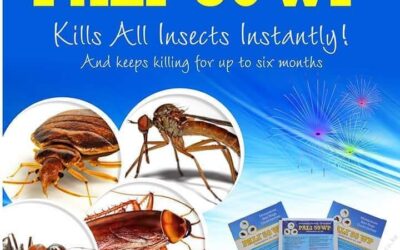Ants, the industrious social insects that tirelessly march across our sidewalks and invade our kitchens, can be a nuisance that disrupts our daily lives. Their ability to organize into complex colonies, build elaborate networks of tunnels, and consume a wide range of food sources makes them formidable opponents. However, with the right knowledge and ant pest control products, you can effectively eliminate these pesky invaders and restore peace to your home.
Understanding the Ant Army
Ants are social insects that live in colonies, with each colony containing thousands of individuals. Each ant plays a specific role in the colony, from foraging for food to caring for the queen and her brood. Ants are highly adaptable and can thrive in various environments, from urban settings to rural landscapes.
Identifying Ant Invaders
Common signs of an ant infestation include:
-
Ant trails: Ants travel in well-defined trails, often following walls, baseboards, and countertops.
-
Ant sightings: You may notice individual ants crawling around your kitchen, bathroom, or other areas of your home.
Ant mounds: Outside your home, you may notice ant mounds, which are small mounds of soil created by ants as they excavate their underground tunnels.
Eliminating the Ant Invasion: A Strategic Approach
Effective ant elimination requires a strategic approach that targets both the ants and their food sources:
-
Identifying the Ant Species: Different ant species have different behaviors and vulnerabilities. Identifying the ant species in your home will help you choose the most effective elimination method.
-
Locating the Ant Nests: Ant nests are typically located underground, but they can also be found in walls, under appliances, or inside potted plants. Once you locate the nests, you can target them directly.
-
Ant Baits: Baits containing boric acid or fipronil are highly effective in eliminating ants. Place baits near ant trails or directly into ant nests.
-
Ant Sprays: Residual insecticides, such as pyrethrin or permethrin, can be applied to ant trails and around entry points to prevent further ant invasions.
-
Diatomaceous Earth: Diatomaceous earth is a natural pesticide that can be applied around ant trails and entry points. Ants crawl over the diatomaceous earth, which punctures their exoskeletons and causes them to dehydrate and die.
-
Eliminating Food Sources: Ants are attracted to food sources, so it’s crucial to eliminate these sources to prevent further infestations. Store food properly in airtight containers, clean up spills promptly, and dispose of trash regularly.
-
Sealing Entry Points: Inspect your home’s exterior for cracks, crevices, and gaps that ants can use to enter. Seal these entry points using caulk, weather stripping, or other appropriate materials.
Professional Assistance: When DIY Fails
If DIY methods prove ineffective or the infestation is severe, seeking professional pest control services is advisable. Professional pest controllers have the expertise and equipment to tackle even the most stubborn ant infestations.
Conclusion: A Home Free from Ant Invasions
By understanding the habits and vulnerabilities of ants, implementing effective elimination strategies, and maintaining a clean and well-maintained home, you can effectively eliminate ants from your home and prevent future infestations. Remember, vigilance is key. Regularly inspect your home for signs of ant activity and take prompt action to address any infestations. With a proactive approach, you can keep your home ant-free and enjoy a peaceful environment.



0 Comments